
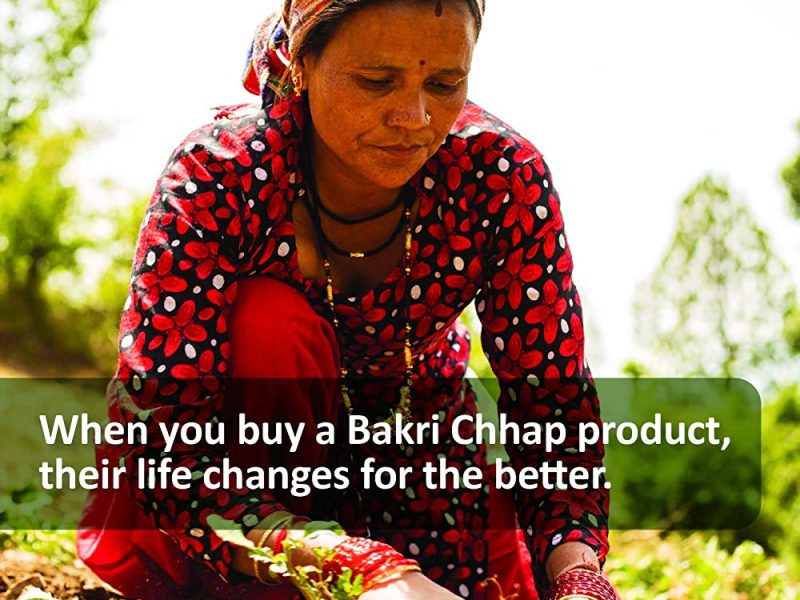
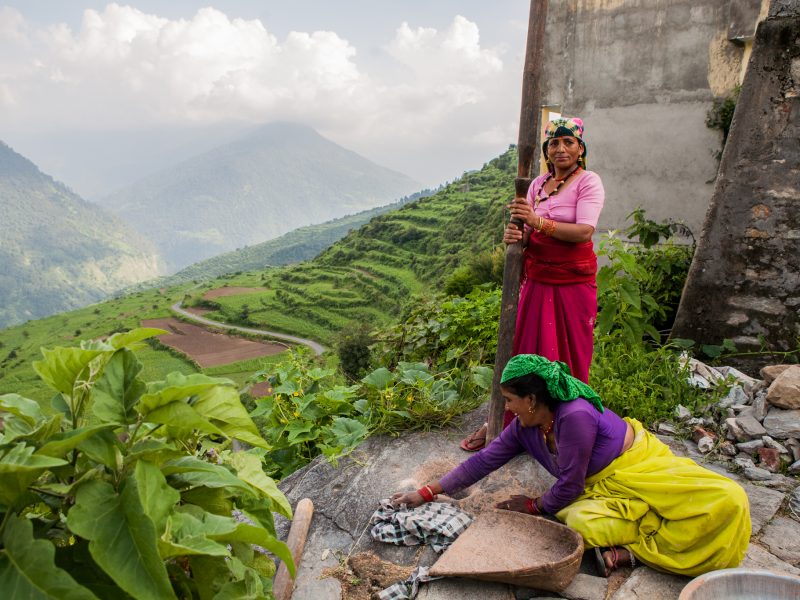
BakriChhap envisions a sustainable future for rural India, where traditional practices thrive alongside responsible tourism, fostering vibrant communities empowered by their natural and cultural heritage.
Our mission is to revitalize rural economies through the promotion of sustainable products and experiences, harnessing the power of local resources and knowledge. We aim to create a platform that bridges the gap between rural artisans, farmers, and responsible travelers, fostering economic growth while preserving indigenous traditions.
BakriChhap is a pioneering platform and marketplace dedicated to showcasing “rural Indian” sustainable products and fostering responsible travel experiences. Our journey began over a decade ago in an abandoned village nestled within the lower Garhwal Himalayas. Through innovative social interventions, we revitalized the community, witnessing an 80-fold increase in footfall and a resurgence of traditional architecture. This transformation not only brought farmers back to their homes but also revived traditional crops in fallow fields, thanks to new market linkages facilitated by our platform and capacity-building efforts.
By facilitating market linkages and empowering locals, we transformed fallow fields into thriving agricultural hubs, catalyzing a successful reverse migration model. Our pioneering approach gave rise to “Hyperlocal Rural Reality Tourism,” igniting interest in off-grid destinations and driving economic growth. Agricultural land prices rose fivefold, establishing a sustainable model in a region plagued by rural outmigration.
Expanding our footprint, we empower communities to co-create thematic villages, celebrating hyperlocal realities through events like Goat Weddings and Grass Cutting Fests. Additionally, we provide market linkage for ethically grown farm produce, fostering sustainable livelihoods.
Recently, we’ve ventured into consulting, collaborating with Rural Tourism boards of MP & UP to curate over a dozen “villages of the future, from the past.” Our vision is to cultivate a new generation of ecopreneurs, who serve as stewards of natural and cultural heritage, driving sustainable change at the grassroots level.
Guided by principles of People Care, Earth Care, and Fair Share, we prioritize regenerative practices and advocate for environmental stewardship. Through Reduce, Recycle, and Reuse, we strive to minimize our ecological footprint and maximize social impact.
Operating in a challenging ecosystem marked by infrastructure and capital deficiencies, we remain consistent in our commitment to rural development. Unlike legacy players driven solely by profit, we prioritize structural and cultural reforms, empowering rural communities to reclaim their ancestral professions and revitalize their way of life.
We excel in social engineering & community mobilization to develop micro-entrepreneurial agro-tourism models. One Bakri Chhap Theme Village, rejuvenates the environmental, agricultural & cultural heritage of 20-30 villages.
Back in 2016, we started with an organization called Green People, working towards reverse migration of marginalized farmers via our two channels namely ‘The Goat Village’ & ‘Bakri Chhap’. While through the former we promoted farm retreats/ home stays and revived abandoned villages by leveraging their tourism potential, through the latter, we provided market linkage to indigenous farm produce naturally grown by the community that we worked with. We managed to transform an ecosystem altogether and became the only successful reverse-migration model of the state which has one of the highest concentration of NGOs. We achieved a huge social equity despite being a for-profit organization.
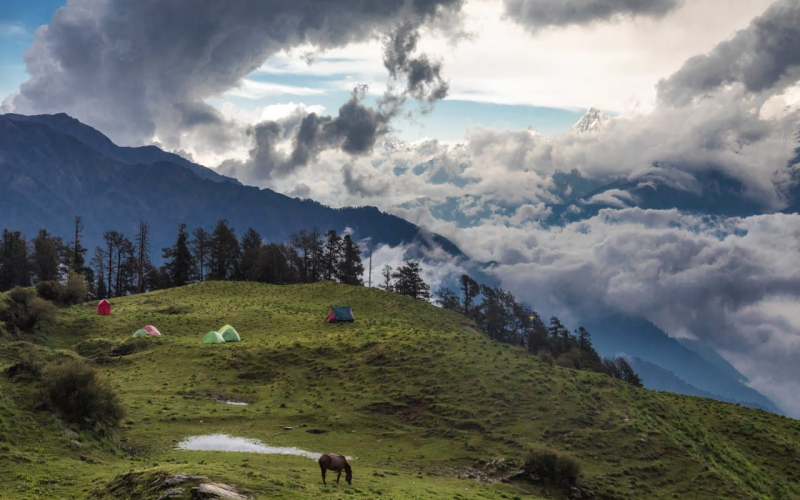
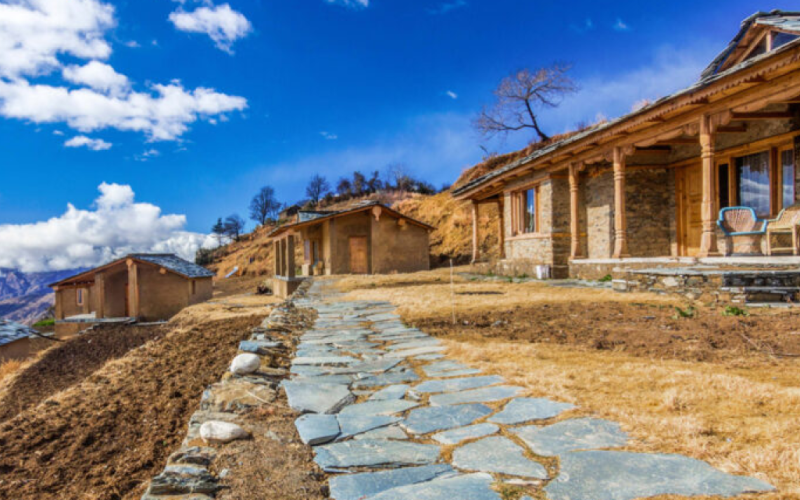
The farm produce that we collect is grown in the traditional way using natural ingredients which are an intrinsic part of the village.
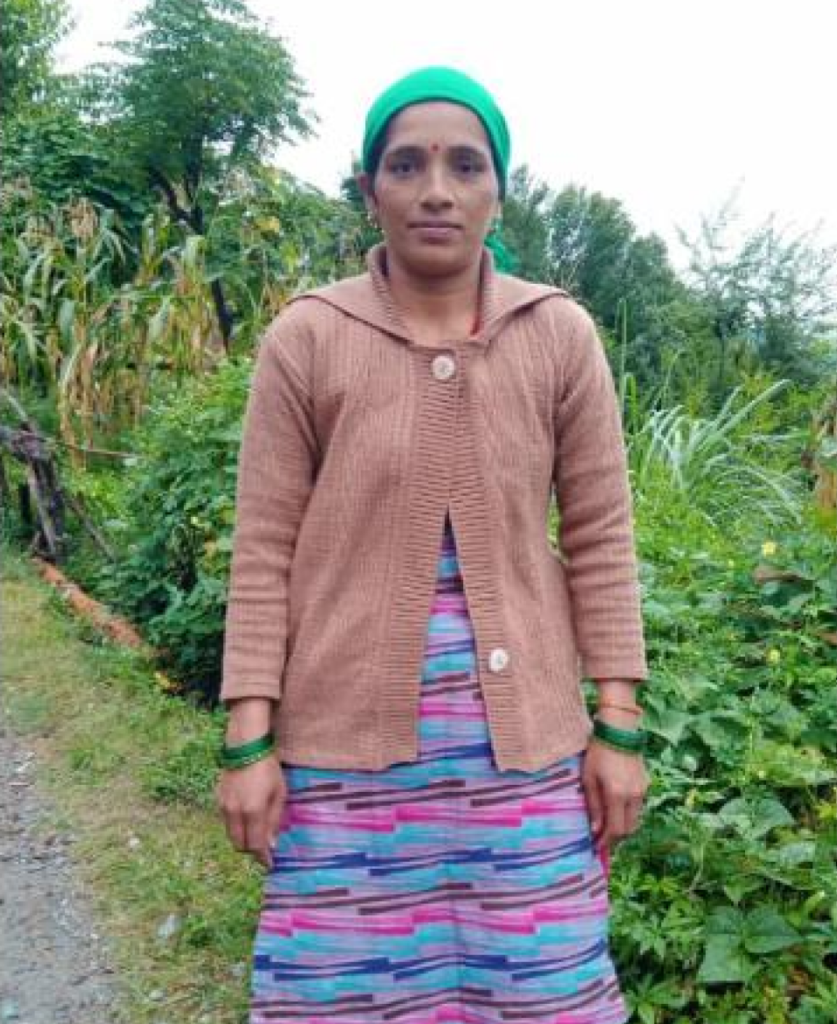
She is Sangita Devi from Matholi village in Uttarkashi District of Uttarakhand. Sangita lives
with her husband and 2 daughters and relies on farming and her son’s govt job to manage their household. With Bakrichhap she has found a mentor who would buy her grains at better prices than any other vendor in their areas. She has one room as a home stay attached to the WOMENS VILLAGE theme. She provided 50 kgs of Jhangora to Bakrichhap to be brought to your table. You can visit her by booking at our themed village here.
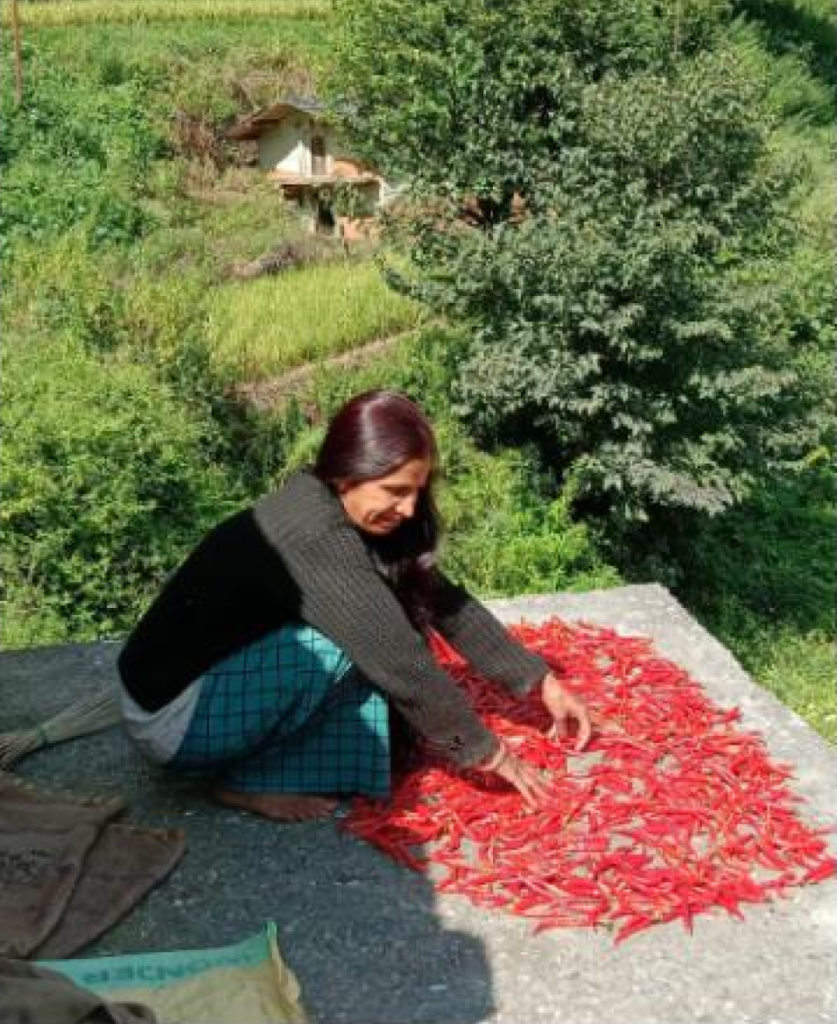
Prema Devi lives in Matholi village which is also known by the name of The Womens Village by
Bakrichhap. She along with her husband is a proud farmer who works tirelessly to grow a fairly large quantity of Rajma in her fields which are spread over a large landscape. Her dedication has made her the largest producer of Rajma in Matholi. She is a part of Bakrichhap Farmer COmmunity and also contributes her services for cleaning and grading of grains produced in Matholi.
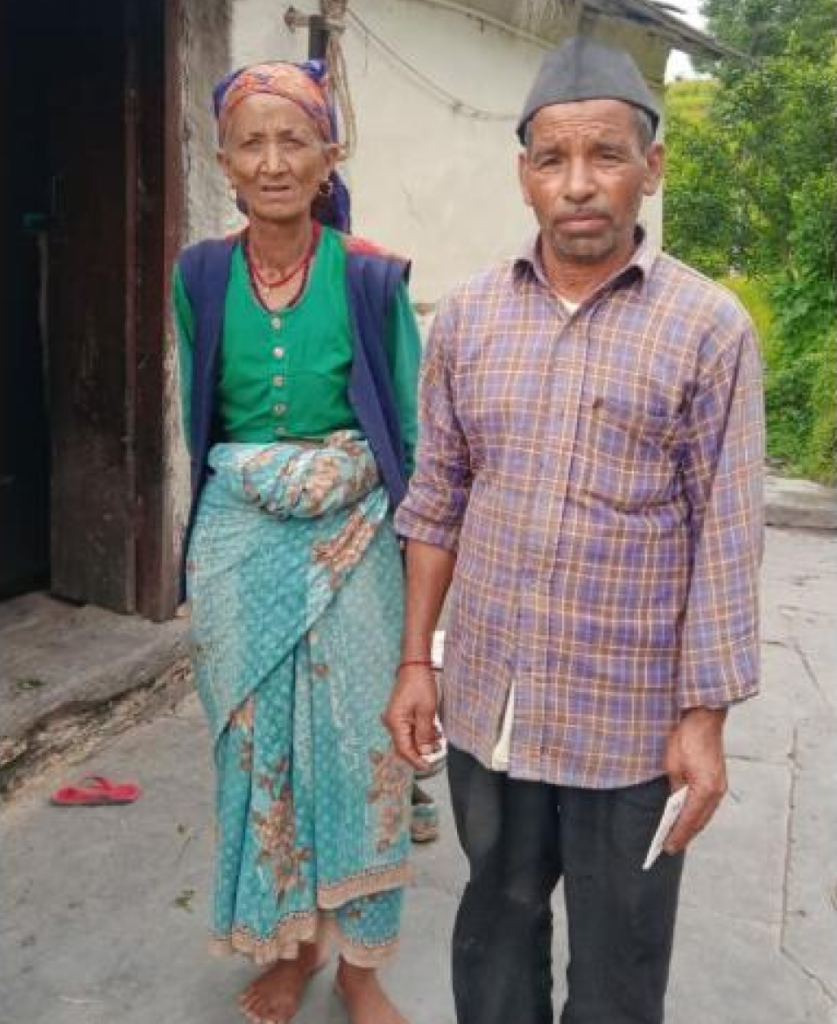
Ababal Singh Kaintura is an experienced farmer with 5 children, who has the wisdome to
understand the local weather systems. His hardwork and his understanding of weather gives him some edge over others. He along with his family – even wiht a farm land distributed in many small parts – manage to grow a fairly larger quantity of Red rice. Red rice grown by him and his family is nearly a connoisseurs item. He is proud member of Bakrichhap farmer community and wants to sell off all his produce only through Bakrichhap connect and this month he provided 384 kilos of red rice to us. He resides in Chilot village and to meet him one can plan a trip to the WOmen Village and visit him.
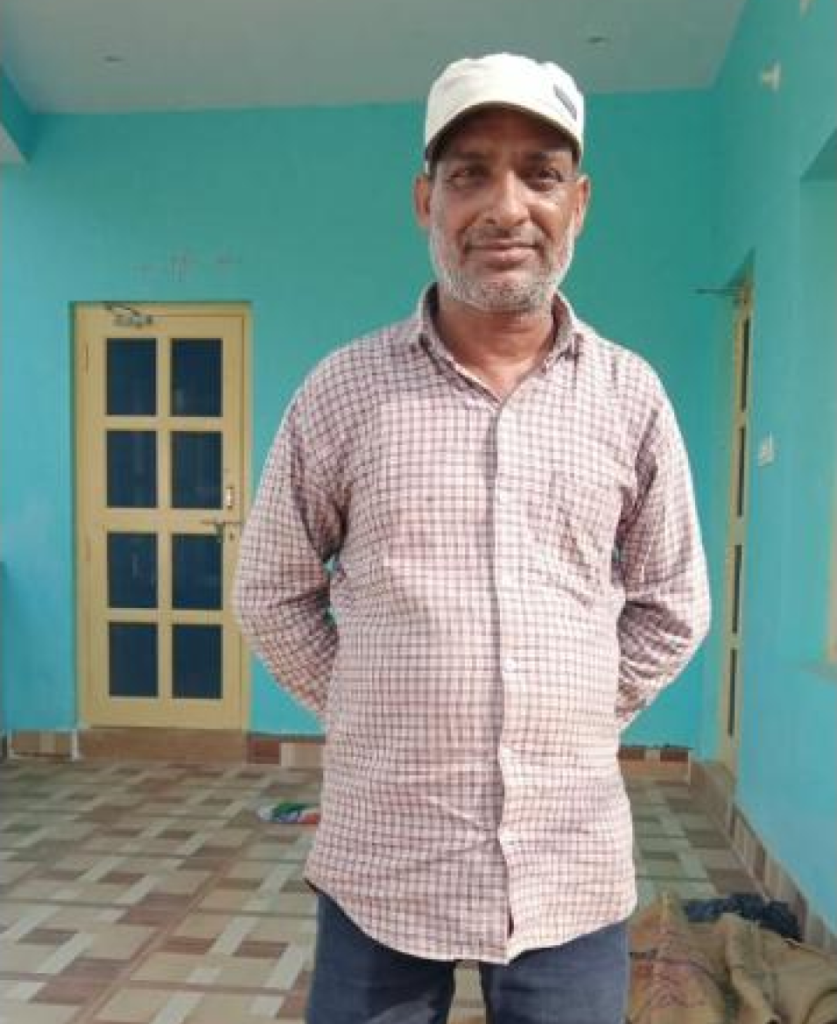
Jaipal Singh lives in Lawdi village in Dehradun which is also known for the 9th century and
some prehistoric temples around the famous Lakhamandal. Bakrichhap is developing Rural home stays around this valley in this year. Meanwhile they are connected to the farmers here and especially of the tribal belt. Yo can visit Jaipal by staying put at The Hideout Lodge, Pantwari by Bakri Chhap, Nagtibba base. A hard working family that excels in growing the famous Red Rajma marketed by Bakrichhap. they are proud to supply to us as they believe that we honour their hard work.

Manbeer Singh is another hard working farmer from Baret village in Uttarkashi District of
Uttarakhand where he lives with his wife and 3 children. He also have worked as a small contractor for odd jobs - but with Bakri Chhap he has found a mentor and is now determined to grow local millets and also the staple Red rice that he has been growing ever since he was small. To visit him one can plan a visit to the Women Village and visit his farms.
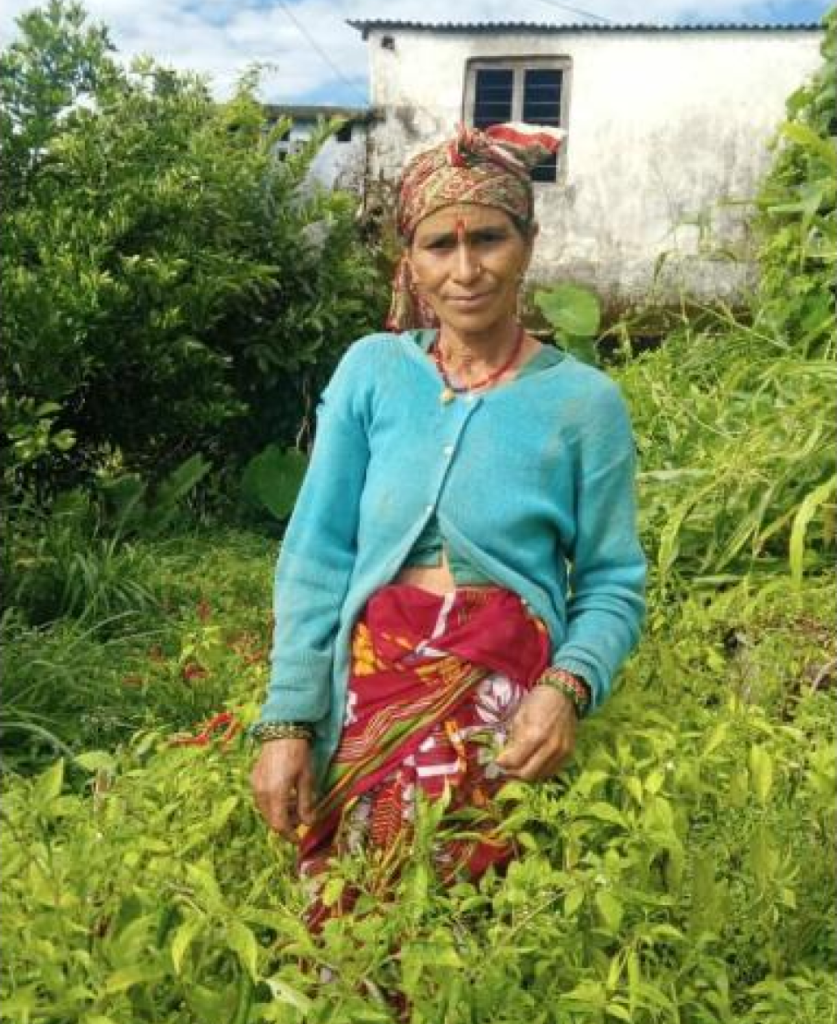
Vimla Devi also a proud traditional farmer. She along with her husband and daughter-in-law
- all practice traditional farming on their terrace farms. While her two sons work in cities as a driver and hotel assistant - she is determined to enhance her farming and also do well with their home stay at Women Village. To meet her one can plan a visit to the WOMEN VILLAGE. This moth she provided for 154 kilos of Jhangora (raw) to Bakri Chhap. She is glad to be associated with the Bakri Chhap Farmer Community.
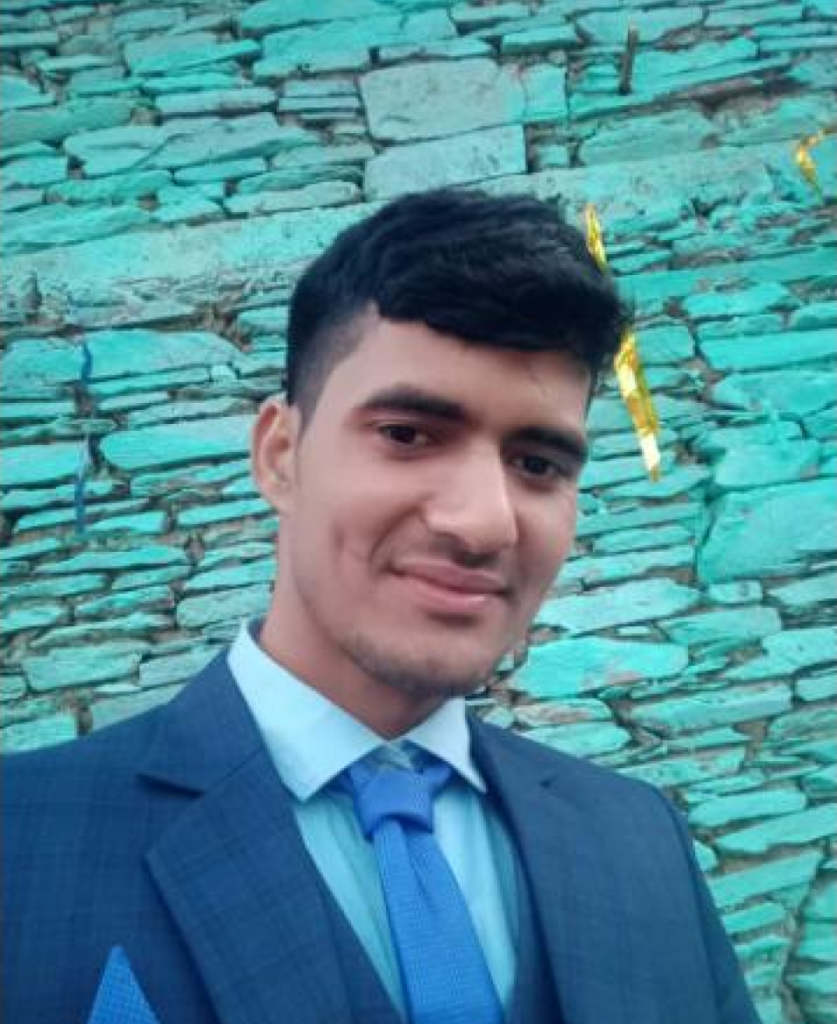
Naresh Singh Kainture from Matholi village in Uttarkashi District of Uttarakhand is also a
traditional farmer who lives with his wife and mother to practice farming. He also participated in the Women Village with his one-room as a homestay. This month he sold 45 kilos of red rice and he was happy to receive a satisfactory price. TO visit him - just book your holiday to the Women Village
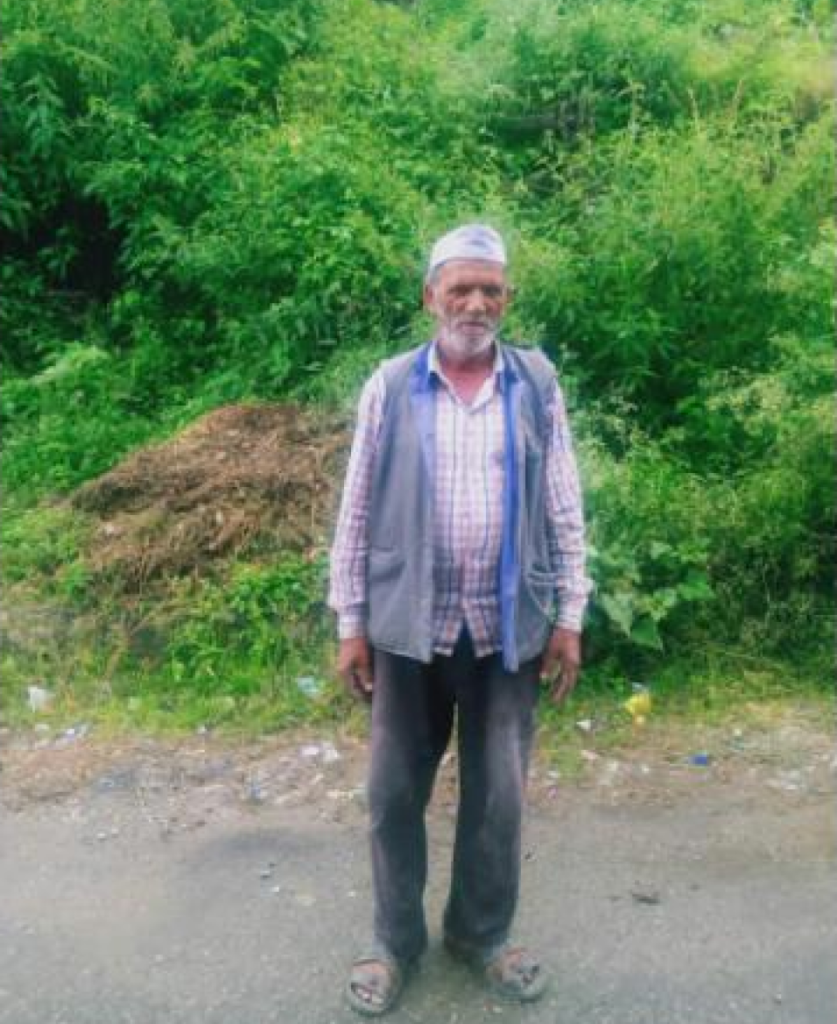
Sovat Singh from Chilot village in Uttarkashi District also depends on farming and lives with
his 2 sons and wife. His elder son runs a photography shop in Srikot - a nearby small township - which is also a help to their family. They are happy to be part of Bakri Chhap community and always receive a fair and higher price for their produce. To visit them you may plan a visit to the Women Village.
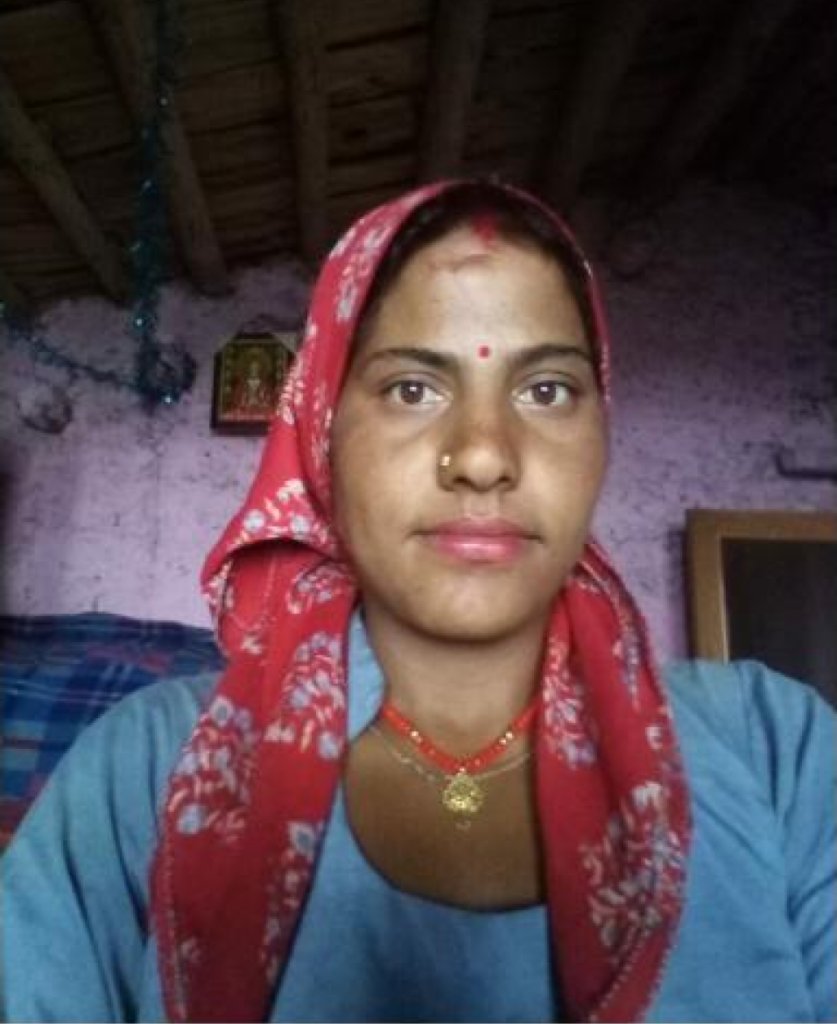
Priyanka Devi lives in Tipri village in Uttarkashi District along woth her husband and her
motherin law. She is school educated and desires to study further while keeping her grounded into the farming family practices. She is happy to be associated with Bakri Chhap whom she has faith that they will always giver her better price for the small quantities that they haev to sell. She is currently getting ready with her house to welcome guests. TO visit her you may plan a vacation to theWoman Village. This month she contributed 67 kilos of Mandua (Finger Millet) to the Responsible Diwali Gift Hampers.
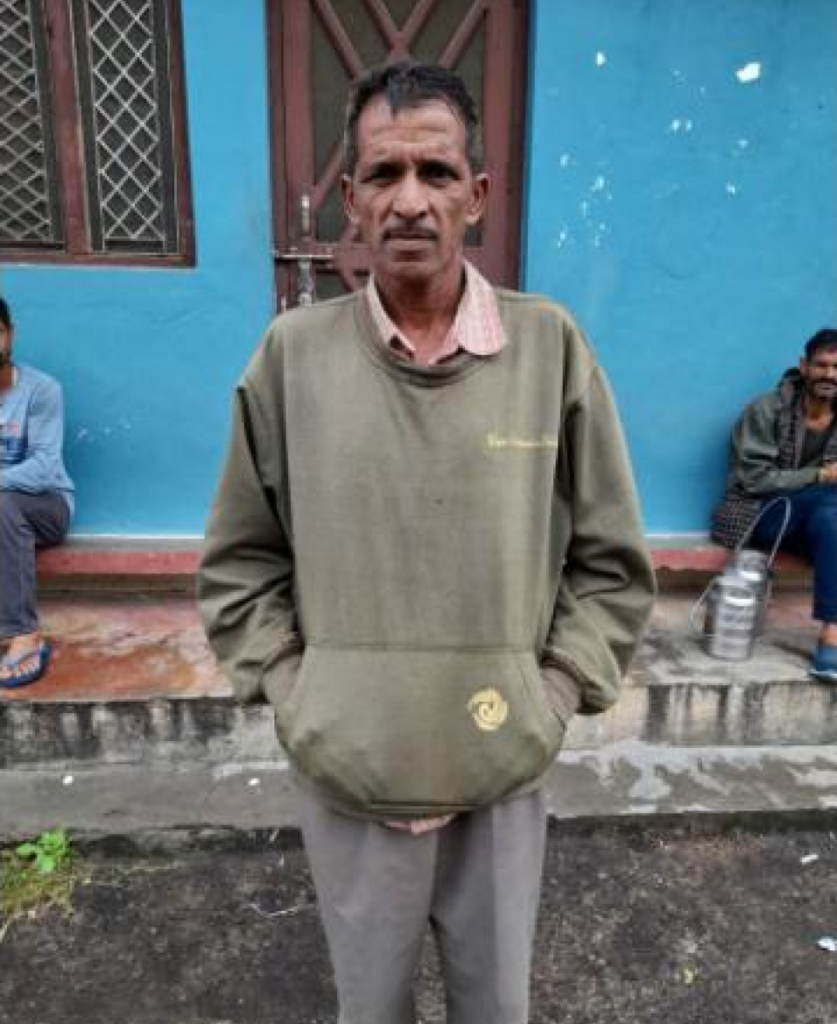
Suraj Lal from Chilot Village in Uttarkashi District lives with his wife, 2 sons, and 4 daughters.
He could not study much due his family's poverty, now he desires to educate his children well and he has found a mentor in Bakri Chhap who buy his grain and also help him market one room that he has converted as a home stay. To meet him one can plan a journey to the Women Village .This month he provided 48 Kg of Mandua (Finger Millet)

Banchi Devi from Chilot village in Uttarkashi District is another farmer who had been
farming for as long aas she remembers. A widow who lives with her 2 sons and their wives are totally dependent on agriculture. They too are happy partners of Bakri Chhap agro tourism and have a room to offer at the Woman Village for tourists. This month they also contributed 48 kilos of Mandua. Tovisit them Plan a holiday to the Women Village
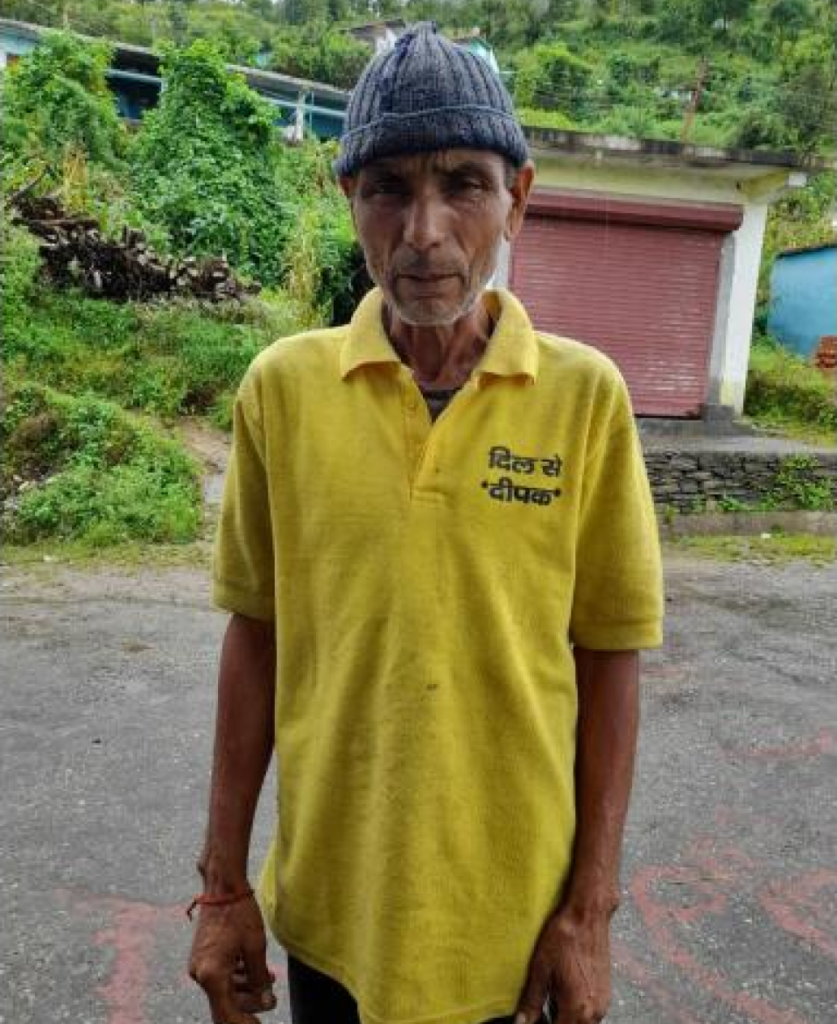
I am Maimber Singh from Chilot village in Uttarkashi District of Uttarakhand. He along with
his wife and his daughter practice traditional farming. One of his sons is a teacher in aprivate school in the next village and the other son is in Gujrat - working as a lower staff in some hotel.. They depend majorly on farming and Bakri Chhap supports their endeavour and hardwork. He too has a room that is open for guests and oner can book to stay with him at the Woman Village. His family gave 145kg of Mandua (Finger Millet) for Responsible Diwali Gift hampers.
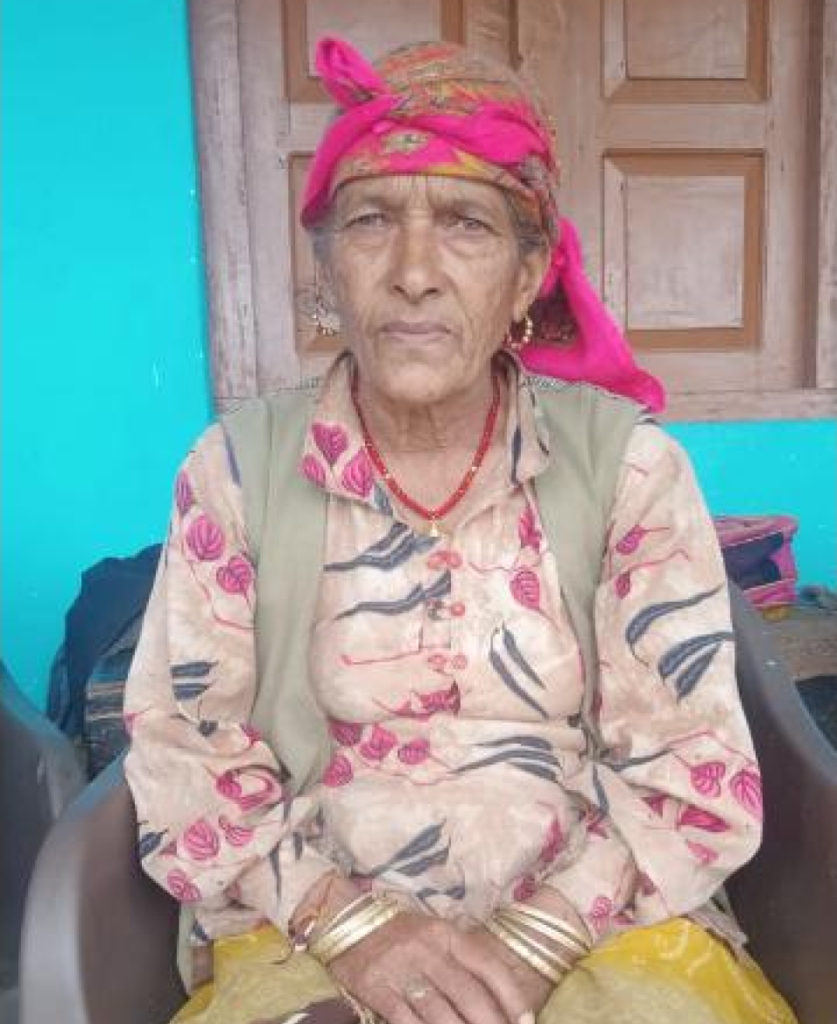
Pratima Devi from Chilot village in Uttarkashi District of Uttarakhand is an old widow who lives
with her daugher in law. Her son works in a hotel in Dehradun to support the family. They depend entirely on farming and are happy to be part of the Bakri Chhap Farmer Community, where they get higher and respectable prices for their produce. They are also working to reposition one of the theri rooms to be used as a home stay at Woman Village Experience.
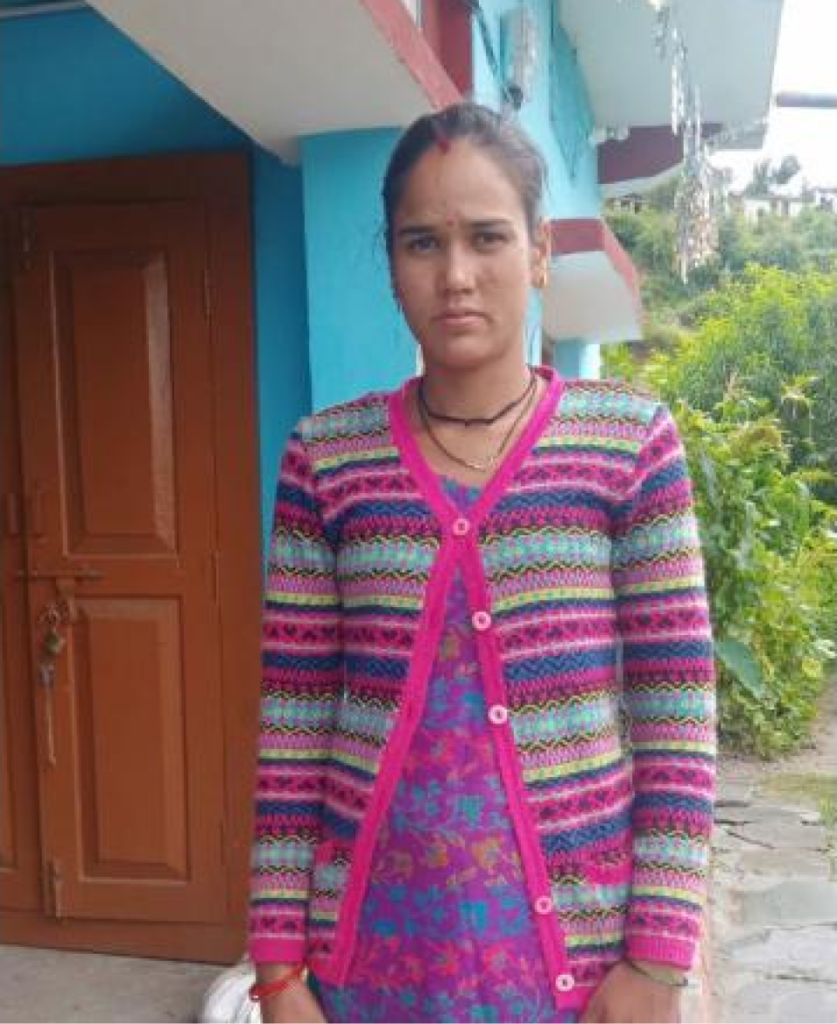
Sobna Devi from Chilot village in Uttarkashi District of Uttarakhand ia a young widow who
lives wikth her daughter in law. Her son works ina hotel in Delhi to support them. With bakri Chhap they are assure that what ever they will grow will be bought at much higher price than the market and they too will soon benefit from the tourism verticle of Woman Village. She supplied 80 kilos of red rice for Responsible Diwali Gifting.
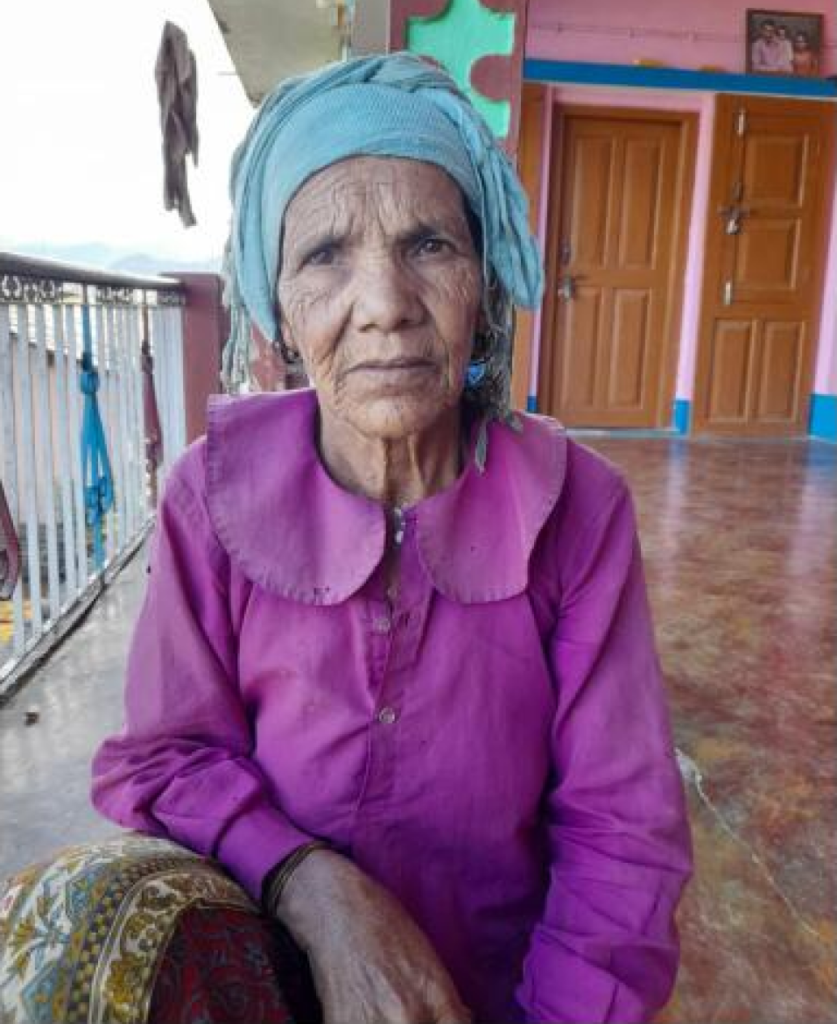
I am Jumli Devi from Chilot village in Uttarkashi District of Uttarakhand is an old widow who lives
with her 3 sons and their wives and depend totally on the grain they gorw to support their family. The sons also work as daily wage labour in random projects in the adjoining areas. They are happy to get patronage from Bakri Chhap who buys thier grains at much higher and respectable prices. For Responsible Diwali Gifting they could sell 67 kgs of Mandua(Finger Millet).

Radha Devi from Chilot village in Uttarkashi District has completed her schooling till class
12th. But due to poverty could not study any further. Her husband works in a private company in Dehradun. She was the happiest as Bakari Chhap happily agreed to buy out only 8 Kg of Chaulai (Amranth) that she had to spare and that too at a much better price. She is also a part of the farmer community of Bakri Chhap. They too plan to reposition one of the rooms for homestay. To meet her you can plan a holiday to the Woman Village.
Micro Marginalized & Small Farmers Brand.
BAKRI CHHAP AGRO TOURISM AND NATURAL PRODUCTS PRIVATE LIMITED
Bakri Chhap Agro Tourism & Natural Products Pvt. Ltd. © 2024. All Rights Reserved.